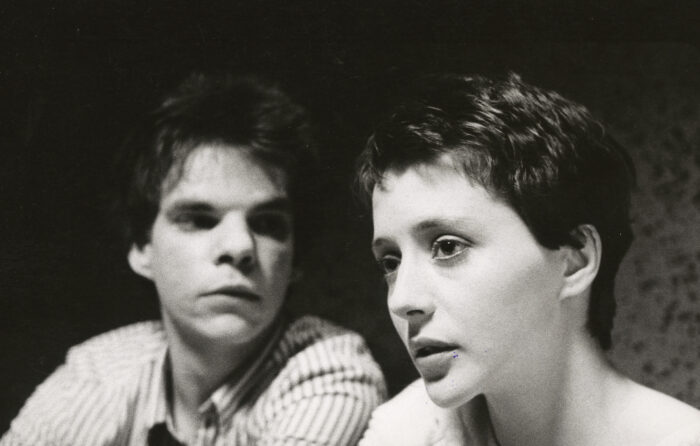A boy, a girl, and the Parisian night — these are the ingredients used by the then only 22-year-old Leos Carax to create his first feature-length film, breathing life into French cinema, which had begun to stagnate after the mid-1980s. The up-and-coming director was already a master of jaggedly poetic stylisation at the time; the plot of the minimalist small-budget piece acts more or less as connective tissue.
Carax’s go-to actor (his alter ego) Denis Lavant plays a young man about to enter military service – 22-year-old (sic!) Alex, who aspires to be a filmmaker. Having lost his girlfriend to his best friend, he now meets a new love interest, the equally disconnected Mireille.
Mireille, having left the countryside for Paris with dreams of starring in commercials, is in turn troubled by the loss of her boyfriend. Like a dream, the enveloping black-and-white Parisian night vibrates in some history-less landscape of the then-near future.
Boy Meets Girl creates its own reality, for which Denis Lavant’s mime-like visage acts as a “philosophical” sounding board. His rubbery expression seems to speak both to the innocence of youth and to a sense of ageless experience. “As a production phenomenon, and due to its unique style of expression and subsequent cult following, Boy Meets Girl gets closer to the spirit of the New Wave than perhaps any French film in 20 years,” writes Sakari Toiviainen in his book “Elokuvan hengenveto: Ranskan uusi aalto ja sen perintö.”
Short film It’s Not Me by Leos Carax will be screened before Boy Meets Girl on June 13th.
Timo Malmi
